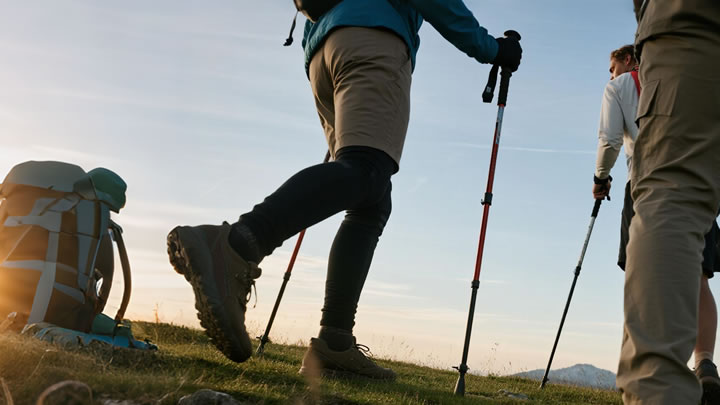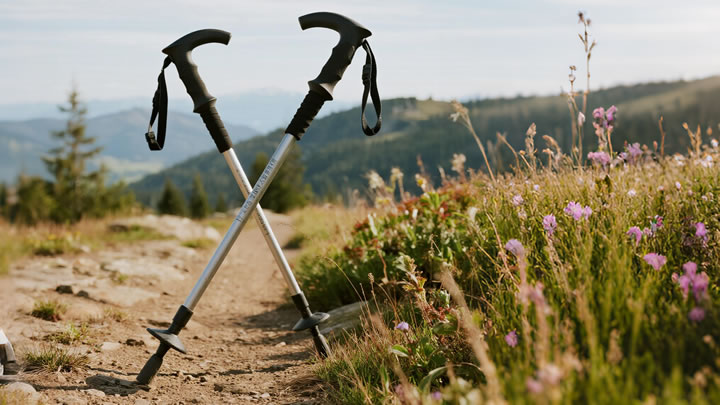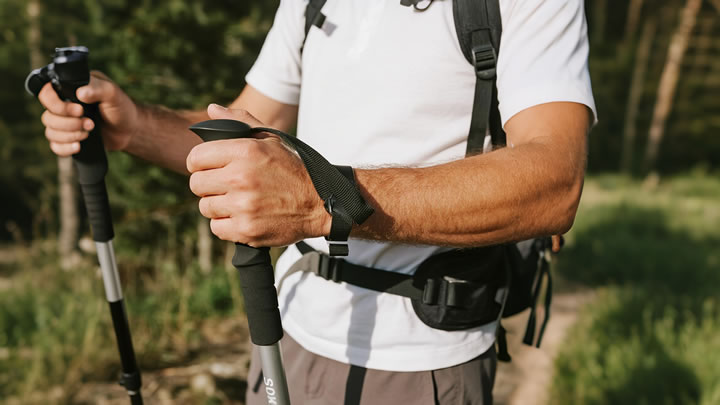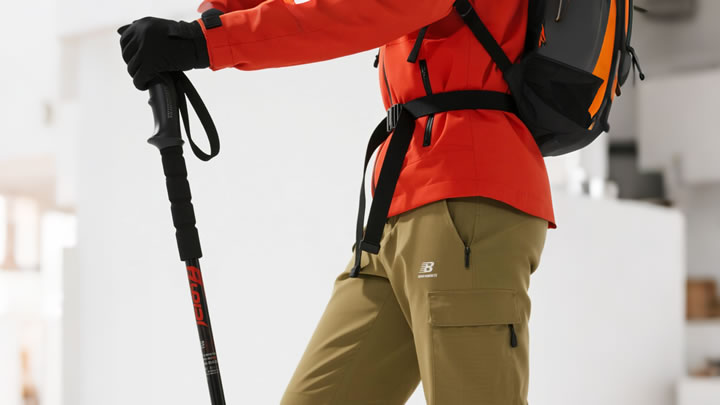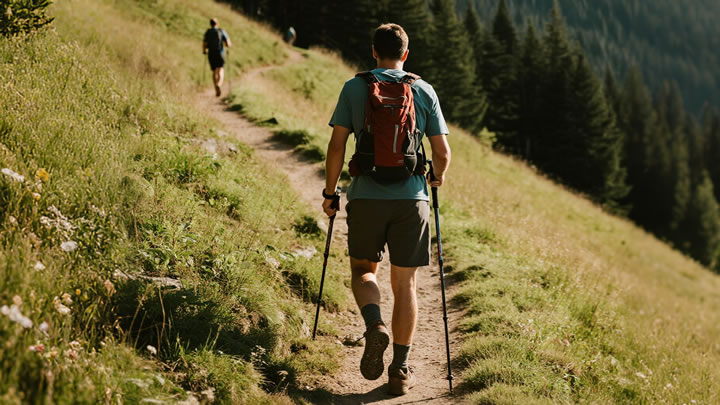Can trekking poles reduce fatigue during long hikes?
For outdoor enthusiasts, long-distance hiking is a great way to connect with nature, but the accompanying fatigue often affects the experience. Among the many pieces of outdoor gear, trekking poles have sparked widespread discussion: can they really reduce fatigue during long hikes? Let's explore this issue in depth from a scientific perspective, practical experience, and data support.
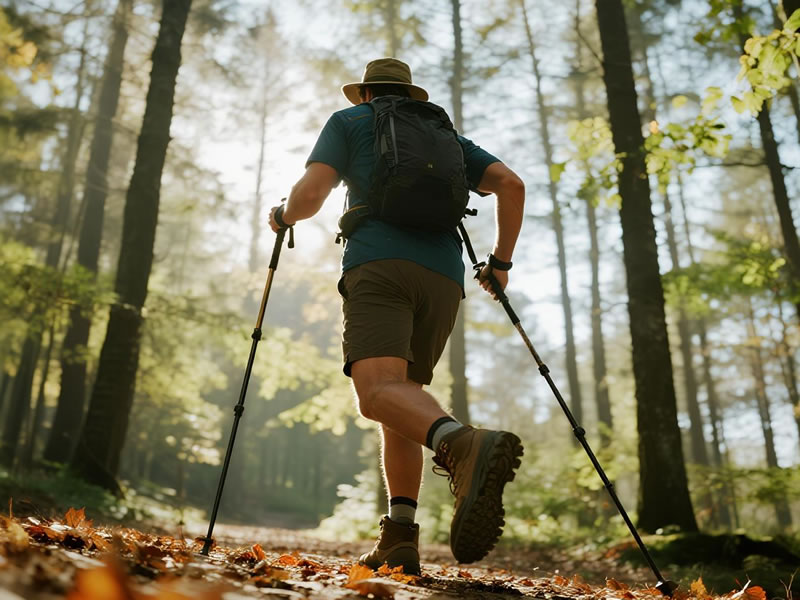
First, from the perspective of biomechanics, trekking poles can effectively share the pressure on the lower limbs. When walking for a long time, the legs, especially the knees and ankles, bear most of the body's weight. Relevant studies have shown that using trekking poles can transfer 20% - 30% of the body's weight to the upper limbs through the arms. This is like adding two "auxiliary legs" to the body, which significantly reduces the load on the lower limb muscles. For example, when going downhill, the knee joint will be subjected to a huge impact. The trekking pole can act as a buffer in advance, slow down the speed of the body's downward movement, and reduce the pressure on the knee, thus delaying the occurrence of muscle fatigue.
Secondly, trekking poles help maintain balance and reduce unnecessary energy consumption. On uneven mountain roads, people need to constantly adjust their body posture to maintain balance, which invisibly consumes a lot of physical energy. The trekking pole forms a stable triangular structure with the two legs, which can quickly stabilize the body when stepping on stones or sliding. This kind of stability allows hikers to focus more on moving forward instead of struggling with balance, thereby saving physical energy. A survey of professional hikers found that those who used trekking poles were 30% less likely to stumble on rough terrain than those who didn't, and their overall energy expenditure was significantly lower.
In addition, trekking poles can promote the coordinated movement of the whole body and reduce local muscle fatigue. When walking without trekking poles, the lower limbs are in a state of high load for a long time, and the muscles of the thighs and calves are easy to accumulate lactic acid, resulting in soreness and fatigue. The use of trekking poles can drive the swing of the upper limbs, make the muscles of the arms, shoulders and back participate in the movement, and realize the balanced distribution of physical strength. This whole-body exercise mode can not only reduce the burden on the lower limbs, but also speed up blood circulation and metabolism, and help the body discharge metabolic waste, thus alleviating fatigue.
It should be noted that the effect of trekking poles in reducing fatigue is also related to their correct use. If the length of the trekking pole is not adjusted properly or the holding posture is wrong, it may not only fail to play a positive role, but also increase the burden on the upper limbs. Generally speaking, when standing upright, the elbow joint should be bent at 90 degrees when holding the trekking pole, so as to maximize the force. In addition, choosing trekking poles with light weight and good shock absorption can also reduce the energy consumption of the arms.
Some people worry that using trekking poles will increase the burden on the upper limbs, but in fact, as long as they master the correct method, this burden is negligible. A study published in the Journal of Sports Science shows that after a short period of adaptation, the energy consumed by the upper limbs when using trekking poles is far less than the energy saved by the lower limbs. In long-distance hiking, this energy difference will gradually accumulate, making the hikers who use trekking poles maintain a better state.
In different terrains, the role of trekking poles in reducing fatigue is more obvious. When going uphill, the trekking pole can provide a forward and upward force, helping the body climb, reducing the force of the legs stepping on the ground; when going downhill, as mentioned earlier, it can buffer the impact; even on flat roads, the rhythm of swinging the trekking pole can adjust the pace, making the movement more regular and reducing the sense of fatigue caused by irregular steps.
In conclusion, a large number of scientific studies and practical experiences have proved that trekking poles can indeed reduce fatigue during long hikes. They reduce the load on the lower limbs through biomechanical principles, improve body stability, promote whole-body coordinated movement, and thus help hikers maintain physical strength and enjoy the fun of hiking better. For outdoor lovers, choosing a suitable trekking pole and mastering the correct use method is undoubtedly a wise choice to improve the hiking experience.

